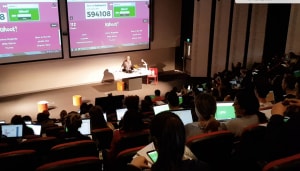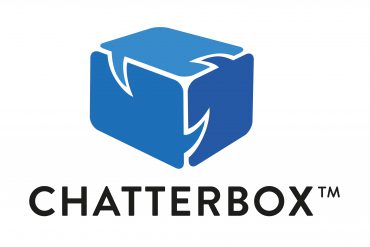Classroom response systems, sometimes called ‘clickers’, have been used in secondary and higher education for many years. They can be invaluable, especially in large classes, for both teachers and students. The former can get instant feedback on the level of students’ understanding and adjust how they teach. The latter can get feedback on their grasp of the material and their progress. With a number of apps available, including one built into the new Echo360, and students connected as never before, response devices can be used to help develop interactive and engaging lectures that positively impact student learning.
This article was contributed by Samantha Haley and Adam Bridgeman.
What polling tools are available to us?
Socrative, Poll Everywhere, and Mentimeter are the most commonly used polling tools across campus, with Kahoot! used for a more ‘game-show’ style. However, with the introduction of polling and quiz functionality within Echo360, you will now be able to embed your polling questions directly into your lectures slides if you use the Echo360 Active Learning Platform, making it a one-stop solution to more lively lectures.
Why use polling in lectures?
The short answer is to create a more engaging, interactive, and relevant learning environment for your students, where they feel they are a contributor to the lecture and to their own learning. The teacher can also get immediate feedback on the understanding and views of the students.
It’s important to choose the style of question that supports the objective. One of the most popular applications of polling tools is for testing recall and understanding. Using multiple choice questions to test conceptual understanding through a pre-lecture quiz taken either individually, or collectively as a lecture ‘warm-up’ activity, focuses student attention on the task at hand and confirms whether they have a preliminary understanding of the lecture content.
At critical points during the lecture, it’s good to reflect on real-life or practical applications of the concepts under discussion, by perhaps showing a brief video exemplifying the issue and stopping it part way through to ask the students, ‘what happens next?’ or ‘what is the best solution?’ and let’s not forget the all-important second part to that question, ‘justify your response’, to extend students’ understanding beyond recall and understanding to applying or analysing the concept at a deeper level. Students working collaboratively with peers to solve a ‘wicked’ problem improves communication and team work skills, as well as creating a sense of belonging and engagement with the subject matter, the rest of the cohort, and with the lecturer.
How is polling being used in lectures?
Here are some innovative approaches to polling across campus:
Gorana Grgic, United States Studies Centre
Gorana, a lecturer at the United States Study Centre, opens a 5-6 question Socrative quiz as a pre-lecture task, introducing students to the lecture topics and giving them time to do some research of their own prior to attending the lecture. The objectives of these quizzes are to:
- confirm knowledge gaps,
- invoke discussion around controversial issues, and
- act as an ice breaker with guest lecturers.
Gorana often aligns her quiz questions with public opinion polls, facilitating a direct comparison between public opinion and that of her students, thereby personalising the experience for the students, as their opinions are discussed and challenged, motivating greater engagement.
Steve Sommer, Business School
Steve, a senior lecturer in the Business School, uses polling to better engage his students during his 2-3 hour lectures. He has three different approaches depending on the complexity of the content being covered:
- Preview: used at the beginning of the lecture to quiz students on concepts for which there are common misconceptions. Highlighting those misconceptions then and there, motivates students to actively engage with the lecture content.
- Review: posing a few short questions using the polling tool mid-lecture to confirm conceptual understanding of content just covered.
- Experimentation and Reflection: one half of the class responds to one hidden question and the other half to a related paired hidden question. Once the results are in, Steve asks students to collaboratively explain the variation in the two sets of results in order to have students derive the concept being taught.
Attendance at Steve’s lectures is high (around 80%) and student feedback in the USS is positive, thanks to the high level of interactivity and therefore engagement during the lectures. Steve’s tip when introducing polling tools is to always start with a generic and fun practice question to illustrate the tool’s functionality, thereby helping the students relax into an interactive lecture.
Siggi Schmid & Adrian George, School of Chemistry
Siggi, associate professor in the School of Chemistry, has been using polling in lectures since 2005, which at the time involved the setup of radio transmitters and other hardware! Even in 2005, the goal was to increase interactivity in chemistry lectures. Both Siggi and Adrian, senior lecturer also in Chemistry, use polling in conjunction with worksheets in their lectures and they reminded me of an important caveat when using any approach: balance is key.
Both Siggi and Adrian agreed that polling in lectures is a wonderful way to test students’ understanding of important concepts by forcing students to commit to a response. It can be exploited effectively to capture and clarify those common misconceptions. Students are invested in hearing the explanations around the response choices to recognise gaps in their own learning and understand where they sit amongst the cohort.
However, with the popular polling apps (unlike the new polling integration into Echo360), students leave the lecture room with nothing tangible to show for their work. In Chemistry, worksheets provide that balance by becoming the important ‘takeaway’ resource to support their ongoing study.
What do students think?
Research I conducted in 2017 with Sharon Herkes, senior lecturer in Sydney Medical School, in her physiology classes in which she utilised Socrative for pre-lecture review and Kahoot! for in-class quizzing revealed that:
- 93% of her students enjoyed the use of polling in lectures, and felt that the in-lecture quiz questions helped their learning.
- 89% believed that this format was an effective way to confirm their understanding of important concepts.
- 85% thought it was useful to compare their understanding to others in the cohort.

Dr Sharon Herkes – Kahoot! in action
Common feedback was:
- It’s very competitive so it really motivates me to complete the pre-lesson tasks and learn!
- I find it easier to recall information after the test, in combination with the lecturer’s explanation.
- It really helps to clarify the important points.
Interestingly a slightly less impressive 79% of students agreed that ‘online quizzes should be used more widely’ in their studies with:
- Positive feedback of:
- much of our exam is MCQs, so this format helps to prepare us.
- more interactive lectures help me stay focused.
- Negative feedback of:
- While it’s enjoyable, it takes more class time and it can be distracting.
- Pre-work is very inconvenient!
Tell me more!
Many studies show that an active learning approach in lectures benefits student learning through improved engagement. However, there is no one-size fits all approach to anything we do in our classes. We must always adapt and grow with our students by observing how they are engaging with us and being careful not to overuse any single approach.
Benefits?
Polling tools are a great way to:
- create a ‘feedback > feed forward’ loop without increasing instructor workload.
- ‘chunk’ your lecture to include some active peer review / discussion components to the lecture.
- align with Strategy 5 of the Strategic Plan 2016-20 through the introduction of interactive, technology-enabled learning experiences that challenge students through class ‘interaction, collaboration and enquiry, building greater engagement and a sense of belonging’.
Limitations and considerations?
- Connectivity issues: we always need a plan B!
- It’s not about the tool: polling is only effective if the questions evoke interest, discussion and depth to the concept, and are aligned with the lecture content. Question quality is everything!
What’s the next step?
- Check out the Echo360 guidelines in the Teaching Resources Hub. Echo360 is an enterprise tool and therefore is fully supported through the Educational Innovation Helpdesk.
- Socrative, Mentimeter, Poll Everywhere and Kahoot! are not ‘enterprise supported’ so use these tools to fill a gap Echo360 doesn’t address unless you are already confident with their functionality.






1 Comment